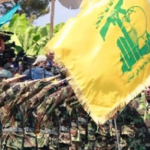GTTAC Series: What Is Hizballah?
Contributing Authors: Eoin B. Healy, Ph.D. and Suat Cubukcu, Ph.D.

Origins
Hizballah’s birth can be traced back to the Israeli invasion of Lebanon in 1982, which was in response to repeated Palestine Liberation Organization attacks from the PLO’s base in southern Lebanon and the attempted assassination of an Israeli ambassador. The invasion, in the middle of the Lebanese Civil War, sparked outrage and resistance within the Lebanese Shia community, which had endured years of marginalization and hardship. Hizballah was established with the support of Iran’s Islamic Revolutionary Guard Corps. It included a wide variety of recruits inspired by the Iranian Revolution, and formed an armed wing dedicated to driving out Israeli forces and challenging Western influence in the region. This nascent group eventually coalesced into Hizballah, meaning “Party of God” in Arabic. Since winning its first seats in the 1992 Lebanese general election, Hizballah has had continuous representation in Parliament.
Ideology
Hizballah’s ideology is rooted in radical Shia Islam, particularly the concept of Wilayah al-Faqih (Guardianship of the Jurist), which grants supreme authority to a religious leader, similar to Iran. The group interprets this as a mandate to resist what it perceives as oppression and injustice, particularly at the hands of Israel and Western powers. Additionally, Hizballah draws inspiration from the anticolonial struggles of liberation movements across the globe, further shaping its resistance-oriented ideology.
Capacity
The group has grown over the decades into a formidable force, potentially as large as 100,000 fighters strong. It boasts a highly trained and disciplined military wing, the Jihad Council, equipped with sophisticated weaponry including rockets, drones, small boats, and anti-tank missiles. This arsenal, primarily acquired through its close ties with Iran, grants Hizballah significant offensive and defensive capabilities, allowing it to engage in conventional and asymmetrical warfare. Since Hamas’s October 7, 2023, attacks on Israel, GTTAC has recorded a dramatic increase in the number of Hizballah strikes on the Jewish state (https://gttac.com/data/).
Common Tactics
Hizballah is renowned for its guerilla warfare tactics, honed through years of conflict with Israel. These tactics include ambushes, hit-and-run attacks, and the use of improvised explosive devices. Additionally, the group utilizes a vast network of tunnels and bunkers in southern Lebanon for cover and movement, further enhancing its operational effectiveness.
Funding
Its financial backing comes primarily from Iran, which provides both direct financial assistance and support through charitable foundations and businesses. Additionally, Hizballah generates revenue through various channels, including fundraising within the Lebanese Shia community, business ventures, and involvement in illicit activities, including trafficking cocaine and cigarettes globally and networking with cartels in South America’s Tri-Border Area (Argentina, Brazil, Paraguay). Hizballah also is known to launder money both through banking systems and Hawala. This diverse funding portfolio sustains Hizballah’s operations and allows it to maintain its independence from traditional state sponsors.
International Relations
The group enjoys strong ties with Iran and its allies, such as Syria, Venezuela, and Hamas. By contrast, it is designated as a terrorist organization by the United States, Israel, and several other Western countries because of its involvement in attacks against Western targets and its anti-Western rhetoric. Within Lebanon, Hizballah holds significant political sway, particularly among the Shia community, but its role also generates internal divisions and tensions.
Hizballah Timeline
1982: Formation and Early Years
- February 1982: Hizballah is officially formed in response to the Israeli invasion of Lebanon, with support from Iran.
- April 1983: Hizballah carries out a suicide bombing targeting the U.S. Embassy in Beirut, killing 63 people.
1985–2000: Resistance Against Israeli Occupation
- 1985–2000: Hizballah engages in guerrilla warfare against Israeli forces in southern Lebanon.
- May 2000: Israel withdraws from southern Lebanon, a significant achievement for Hizballah’s resistance.
2006: Lebanon War
- July–August 2006: Hizballah captures two Israeli soldiers, setting off the 2006 Lebanon War. The conflict results in significant casualties and damage.
2011–13: Involvement in Syria
- 2011: Hizballah openly aligns with the Syrian government of Bashar al-Assad in the ongoing Syrian Civil War.
- 2013: Hizballah’s military intervention in Syria intensifies, with fighters deployed to support the Assad regime.
2016: Loss of Key Figure
- April 2016: Mustafa Badreddine, a key Hizballah military commander, is killed in Syria under unclear circumstances.
2018: Parliamentary Elections and Regional Tensions
- May 2018: Hizballah participates in Lebanon’s parliamentary elections and maintains its influence in the country’s political landscape.
- Throughout 2018: Tensions rise in the region, with Hizballah involved in conflicts in Syria and facing increased scrutiny for its role in regional proxy wars.
2020: Beirut Explosion and Ongoing Challenges
- August 2020: A massive explosion in the Beirut port damages the city, leading to public outrage and protests. While not directly attributed to Hizballah, the incident highlights governance issues.
- 2020–23: Hizballah faces challenges, including internal dissent, economic difficulties in Lebanon, and ongoing tensions in the region.
2023–24: Hizballah and the Israel–Gaza War
- Rocket attacks: Vastly increased the number of Hizballah attacks across Israel’s northern border.
- September 2024 attacks on leadership: Israel targeted and killed most of Hizballah’s leadership, including its leader, Hassan Nasrallah.


